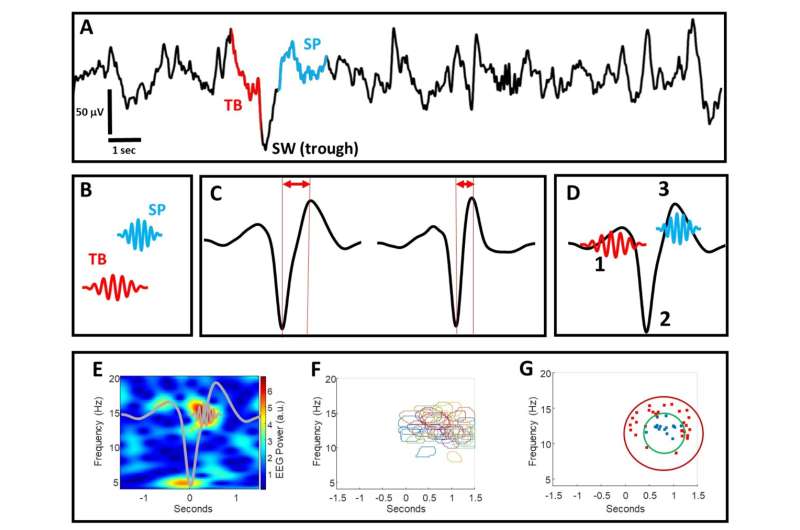This article has been reviewed according to Science X's editorial process and policies. Editors have highlighted the following attributes while ensuring the content's credibility:
fact-checked
peer-reviewed publication
trusted source
proofread
A fitness tracker for brain health: How a headband can identify early signs of Alzheimer's disease in your sleep

Researchers from the University of Colorado Anschutz Medical Campus and Washington University in St. Louis have identified a way to assess brain activity in sleep that occurs in the earliest stages of Alzheimer's disease, typically many years prior to developing symptoms of dementia.
The digital biomarker uses electroencephalography (EEG) that can be recorded from simple headband devices to detect brain wave patterns related to memory reactivation in sleep, which are part of a system that processes memories in deep sleep.
Study results published today in Alzheimer's & Dementia identify a relationship between EEG readings and levels of specific molecular changes indicative of pre-symptomatic Alzheimer's disease. Additional findings further demonstrate that early stages of mild cognitive impairment due to Alzheimer's disease can be detected in the EEG signals.
"This digital biomarker essentially enables any simple EEG headband device to be used as a fitness tracker for brain health," says Brice McConnell, MD, Ph.D., assistant professor of neurology at the University of Colorado School of Medicine and study senior author. "Demonstrating how we can assess digital biomarkers for early indications of disease using accessible and scalable headband devices in a home setting is a huge advancement in catching and mitigating Alzheimer's disease at the earliest stages."
In the largest study of its kind to date, researchers analyzed data from 205 aging adults, identifying measurable problems with memory reactivation in association with levels of proteins such as amyloid and tau that build up in Alzheimer's Disease.
"What we found is these abnormal levels of proteins are related to sleep memory reactivations, which we could identify in people's brainwave patterns before they experienced any symptoms," says McConnell. "Identifying these early biomarkers for Alzheimer's disease in asymptomatic adults can help patients develop preventative or mitigation strategies before the disease advances."
Researchers say this is an exciting step towards using wearables as digital biomarkers for disease detection. "We are just scratching the surface with this work, paving the way for affordable and easy-to-use devices to monitor brain health," says McConnell. "This is proof of principle that brain waves during sleep can be turned into a digital biomarker, and our next steps involve perfecting the process."
More information: Rachelle L. Pulver et al, Mapping sleep's oscillatory events as a biomarker of Alzheimer's disease, Alzheimer's & Dementia (2023). DOI: 10.1002/alz.13420



















